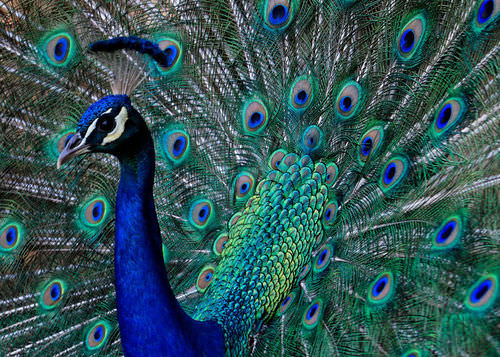8.7: Communication
- Page ID
- 13848
\( \newcommand{\vecs}[1]{\overset { \scriptstyle \rightharpoonup} {\mathbf{#1}} } \)
\( \newcommand{\vecd}[1]{\overset{-\!-\!\rightharpoonup}{\vphantom{a}\smash {#1}}} \)
\( \newcommand{\id}{\mathrm{id}}\) \( \newcommand{\Span}{\mathrm{span}}\)
( \newcommand{\kernel}{\mathrm{null}\,}\) \( \newcommand{\range}{\mathrm{range}\,}\)
\( \newcommand{\RealPart}{\mathrm{Re}}\) \( \newcommand{\ImaginaryPart}{\mathrm{Im}}\)
\( \newcommand{\Argument}{\mathrm{Arg}}\) \( \newcommand{\norm}[1]{\| #1 \|}\)
\( \newcommand{\inner}[2]{\langle #1, #2 \rangle}\)
\( \newcommand{\Span}{\mathrm{span}}\)
\( \newcommand{\id}{\mathrm{id}}\)
\( \newcommand{\Span}{\mathrm{span}}\)
\( \newcommand{\kernel}{\mathrm{null}\,}\)
\( \newcommand{\range}{\mathrm{range}\,}\)
\( \newcommand{\RealPart}{\mathrm{Re}}\)
\( \newcommand{\ImaginaryPart}{\mathrm{Im}}\)
\( \newcommand{\Argument}{\mathrm{Arg}}\)
\( \newcommand{\norm}[1]{\| #1 \|}\)
\( \newcommand{\inner}[2]{\langle #1, #2 \rangle}\)
\( \newcommand{\Span}{\mathrm{span}}\) \( \newcommand{\AA}{\unicode[.8,0]{x212B}}\)
\( \newcommand{\vectorA}[1]{\vec{#1}} % arrow\)
\( \newcommand{\vectorAt}[1]{\vec{\text{#1}}} % arrow\)
\( \newcommand{\vectorB}[1]{\overset { \scriptstyle \rightharpoonup} {\mathbf{#1}} } \)
\( \newcommand{\vectorC}[1]{\textbf{#1}} \)
\( \newcommand{\vectorD}[1]{\overrightarrow{#1}} \)
\( \newcommand{\vectorDt}[1]{\overrightarrow{\text{#1}}} \)
\( \newcommand{\vectE}[1]{\overset{-\!-\!\rightharpoonup}{\vphantom{a}\smash{\mathbf {#1}}}} \)
\( \newcommand{\vecs}[1]{\overset { \scriptstyle \rightharpoonup} {\mathbf{#1}} } \)
\( \newcommand{\vecd}[1]{\overset{-\!-\!\rightharpoonup}{\vphantom{a}\smash {#1}}} \)
\(\newcommand{\avec}{\mathbf a}\) \(\newcommand{\bvec}{\mathbf b}\) \(\newcommand{\cvec}{\mathbf c}\) \(\newcommand{\dvec}{\mathbf d}\) \(\newcommand{\dtil}{\widetilde{\mathbf d}}\) \(\newcommand{\evec}{\mathbf e}\) \(\newcommand{\fvec}{\mathbf f}\) \(\newcommand{\nvec}{\mathbf n}\) \(\newcommand{\pvec}{\mathbf p}\) \(\newcommand{\qvec}{\mathbf q}\) \(\newcommand{\svec}{\mathbf s}\) \(\newcommand{\tvec}{\mathbf t}\) \(\newcommand{\uvec}{\mathbf u}\) \(\newcommand{\vvec}{\mathbf v}\) \(\newcommand{\wvec}{\mathbf w}\) \(\newcommand{\xvec}{\mathbf x}\) \(\newcommand{\yvec}{\mathbf y}\) \(\newcommand{\zvec}{\mathbf z}\) \(\newcommand{\rvec}{\mathbf r}\) \(\newcommand{\mvec}{\mathbf m}\) \(\newcommand{\zerovec}{\mathbf 0}\) \(\newcommand{\onevec}{\mathbf 1}\) \(\newcommand{\real}{\mathbb R}\) \(\newcommand{\twovec}[2]{\left[\begin{array}{r}#1 \\ #2 \end{array}\right]}\) \(\newcommand{\ctwovec}[2]{\left[\begin{array}{c}#1 \\ #2 \end{array}\right]}\) \(\newcommand{\threevec}[3]{\left[\begin{array}{r}#1 \\ #2 \\ #3 \end{array}\right]}\) \(\newcommand{\cthreevec}[3]{\left[\begin{array}{c}#1 \\ #2 \\ #3 \end{array}\right]}\) \(\newcommand{\fourvec}[4]{\left[\begin{array}{r}#1 \\ #2 \\ #3 \\ #4 \end{array}\right]}\) \(\newcommand{\cfourvec}[4]{\left[\begin{array}{c}#1 \\ #2 \\ #3 \\ #4 \end{array}\right]}\) \(\newcommand{\fivevec}[5]{\left[\begin{array}{r}#1 \\ #2 \\ #3 \\ #4 \\ #5 \\ \end{array}\right]}\) \(\newcommand{\cfivevec}[5]{\left[\begin{array}{c}#1 \\ #2 \\ #3 \\ #4 \\ #5 \\ \end{array}\right]}\) \(\newcommand{\mattwo}[4]{\left[\begin{array}{rr}#1 \amp #2 \\ #3 \amp #4 \\ \end{array}\right]}\) \(\newcommand{\laspan}[1]{\text{Span}\{#1\}}\) \(\newcommand{\bcal}{\cal B}\) \(\newcommand{\ccal}{\cal C}\) \(\newcommand{\scal}{\cal S}\) \(\newcommand{\wcal}{\cal W}\) \(\newcommand{\ecal}{\cal E}\) \(\newcommand{\coords}[2]{\left\{#1\right\}_{#2}}\) \(\newcommand{\gray}[1]{\color{gray}{#1}}\) \(\newcommand{\lgray}[1]{\color{lightgray}{#1}}\) \(\newcommand{\rank}{\operatorname{rank}}\) \(\newcommand{\row}{\text{Row}}\) \(\newcommand{\col}{\text{Col}}\) \(\renewcommand{\row}{\text{Row}}\) \(\newcommand{\nul}{\text{Nul}}\) \(\newcommand{\var}{\text{Var}}\) \(\newcommand{\corr}{\text{corr}}\) \(\newcommand{\len}[1]{\left|#1\right|}\) \(\newcommand{\bbar}{\overline{\bvec}}\) \(\newcommand{\bhat}{\widehat{\bvec}}\) \(\newcommand{\bperp}{\bvec^\perp}\) \(\newcommand{\xhat}{\widehat{\xvec}}\) \(\newcommand{\vhat}{\widehat{\vvec}}\) \(\newcommand{\uhat}{\widehat{\uvec}}\) \(\newcommand{\what}{\widehat{\wvec}}\) \(\newcommand{\Sighat}{\widehat{\Sigma}}\) \(\newcommand{\lt}{<}\) \(\newcommand{\gt}{>}\) \(\newcommand{\amp}{&}\) \(\definecolor{fillinmathshade}{gray}{0.9}\)
How do monkeys communicate?
You won't find a monkey texting a friend. They make noises. They make faces. They even use scents to pass along a message. Just because monkeys don't talk like you and me doesn't mean that they don't communicate!
Communication
What does the word "communication" make you think of? Talking on a cell phone? Texting? Writing? Those are just a few of the ways in which human beings communicate. Most other animals also communicate. Communication is any way in which animals share information, and they do this in many different ways.
Do all animals talk to each other? Probably not, but many do communicate. Like human beings, many other animals live together in groups. Some insects, including ants and bees, are well known for living in groups. In order for animals to live together in groups, they must be able to communicate with each other.
Animal communication, like most other animal behaviors, increases the ability to survive and have offspring. This is known as fitness. Communication increases fitness by helping animals find food, defend themselves from predators, mate, and care for offspring.
Communication with Sound
Some animals communicate with sound. Most birds communicate this way. Birds use different calls to warn other birds of danger, or to tell them to flock together. Many other animals also use sound to communicate. For example, monkeys use warning cries to tell other monkeys in their troop that a predator is near. Frogs croak to attract female frogs as mates. Gibbons use calls to tell other gibbons to stay away from their area.
Communication with Sight
Another way some animals communicate is with sight. By moving in certain ways or by “making faces,” they show other animals what they mean. Most primates communicate in this way. For example, a male chimpanzee may raise his arms and stare at another male chimpanzee. This warns the other chimpanzee to keep his distance. The chimpanzee pictured below may look like he is smiling, but he is really showing fear (Figure below). He is communicating to other chimpanzees that he will not challenge them.

Look at the peacock pictured below (Figure below). Why is he raising his beautiful tail feathers? He is also communicating. He is showing females of his species that he would be a good mate.

Communication with Scent
Some animals communicate with scent. They release chemicals that other animals of their species can smell or detect in some other way. Ants release many different chemicals. Other ants detect the chemicals with their antennae. This explains how ants are able to work together. The different chemicals that ants produce have different meanings. Some of the chemicals signal to all of the ants in a group to come together. Other chemicals warn of danger. Still other chemicals mark trails to food sources. When an ant finds food, it marks the trail back to the nest by leaving behind a chemical on the ground. Other ants follow the chemical trail to the food.
Many other animals also use chemicals to communicate. You have probably seen male dogs raise their leg to urinate on a fire hydrant or other object. Did you know that the dogs were communicating? They mark their area with a chemical in their urine. Other dogs can smell the chemical. The scent of the chemical tells other dogs to stay away.
Human Communication
Like other animals, humans communicate with one another. They mainly use sound and sight to share information. The most important way in which humans communicate is with language. Language is the use of symbols to communicate. In human languages, the symbols are words. They stand for many different things. Words stand for things, people, actions, feelings, or ideas. Think of several common words. What does each word stand for? Another important way in which humans communicate is with facial expressions. Look at the face of the young child pictured below (Figure below). Can you tell from her face how she is feeling? Humans also use gestures to communicate. What are people communicating when they shrug their shoulders? When they shake their head? These are just a few examples of the ways in which humans share information without using words.

Summary
- Animals communicate, or share information, through sound, sight, and scent.
- Humans primarily communicate through use of language, facial expressions, and gestures.
Explore More
Use the resources below to answer the questions that follow.
Explore More I
- Can Monkeys Talk? at http://www.youtube.com/watch?v=3lsF83rHKFc (3:36)
- How do the vervet monkeys (Chlorocebus pygerythrus) respond when they hear a "leopard" call?
- How do the vervet monkeys respond when they hear an "eagle" call?
- How do the vervet monkeys respond when the hear a "snake" call?
- Given the vervet monkeys responses to specific calls, do you think they are using language? Explain your reasoning fully.
Explore More II
- How Do Tigers Communicate? at http://www.youtube.com/watch?v=LL99pufzHjo (1:33)
- What are some of the different ways tigers (Panthera tigris) communicate?
- In what sort of ways do tigers communicate through smell?
- Do you think using different smells to communicate is analogous to using different words? Explain your reasoning.
Review
- What is communication?
- Why is communication important?
- Give two examples of how animals communicate with scent.
- Give two examples of how animals communicate through sight.
- Define language.

